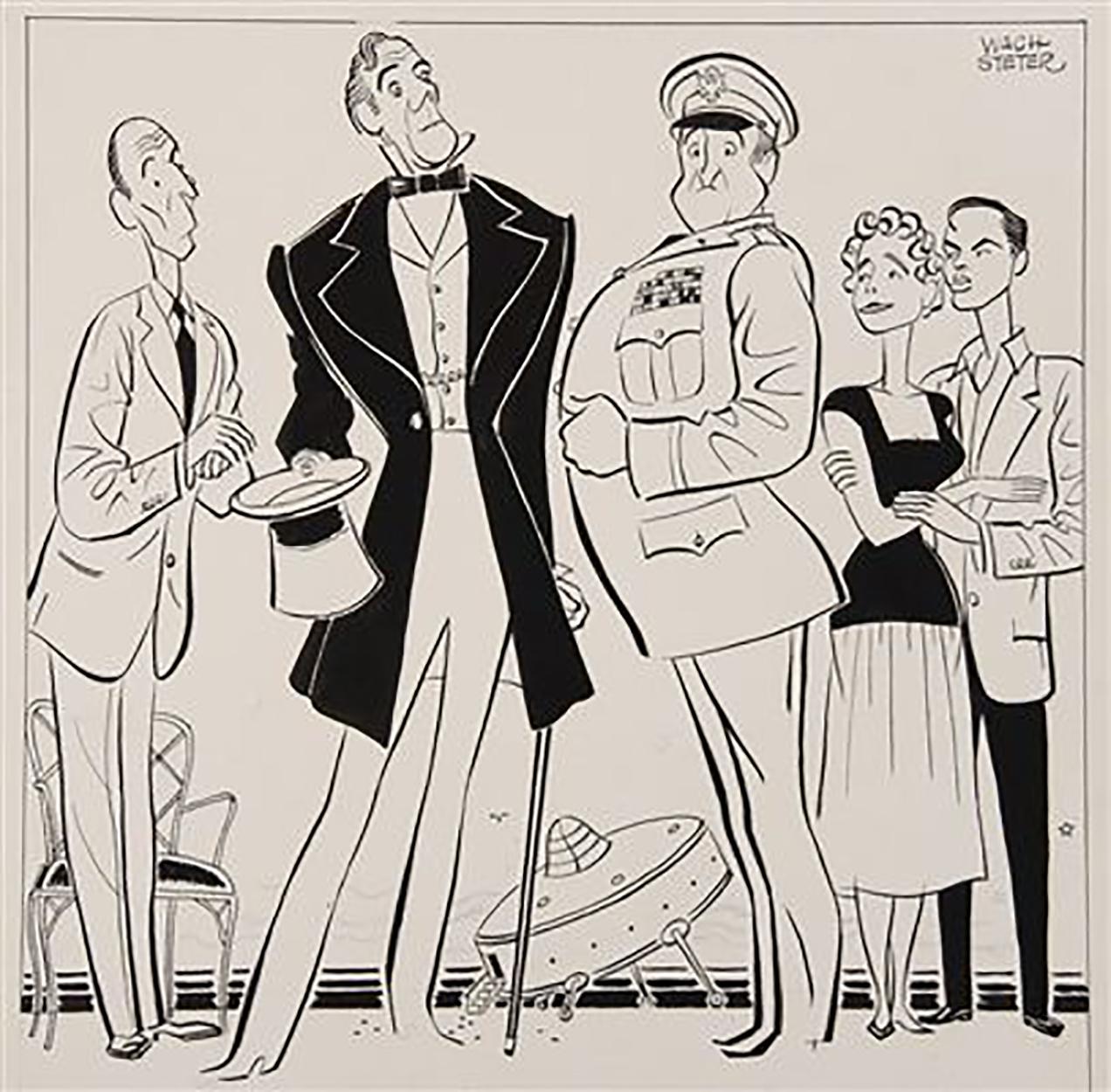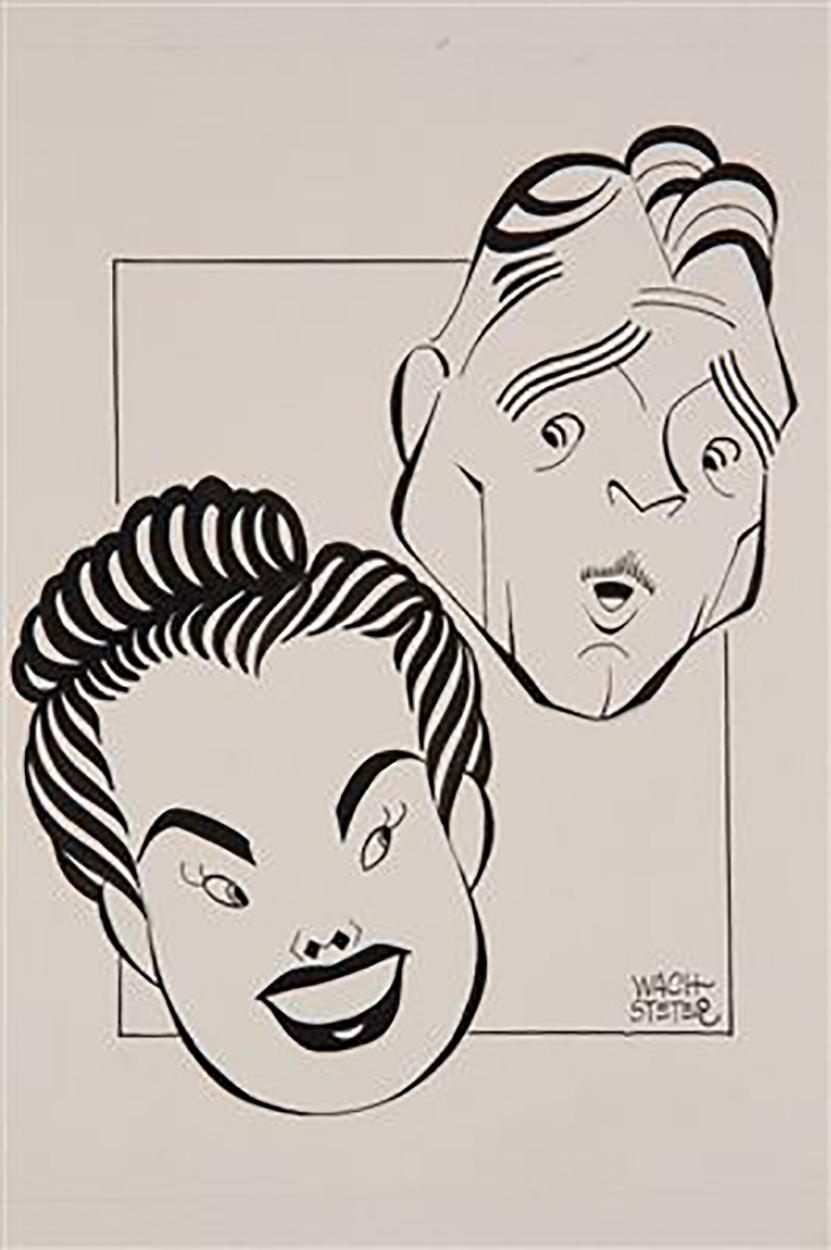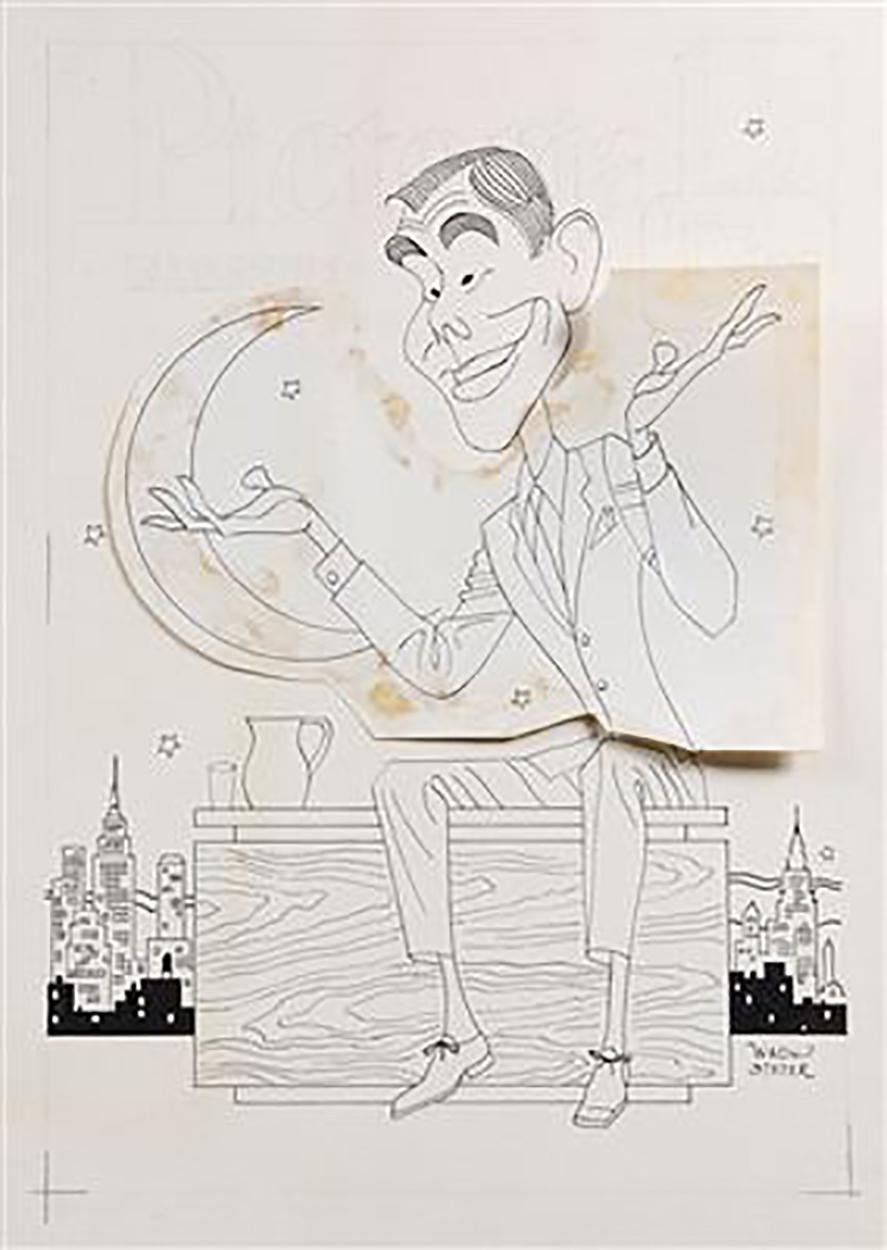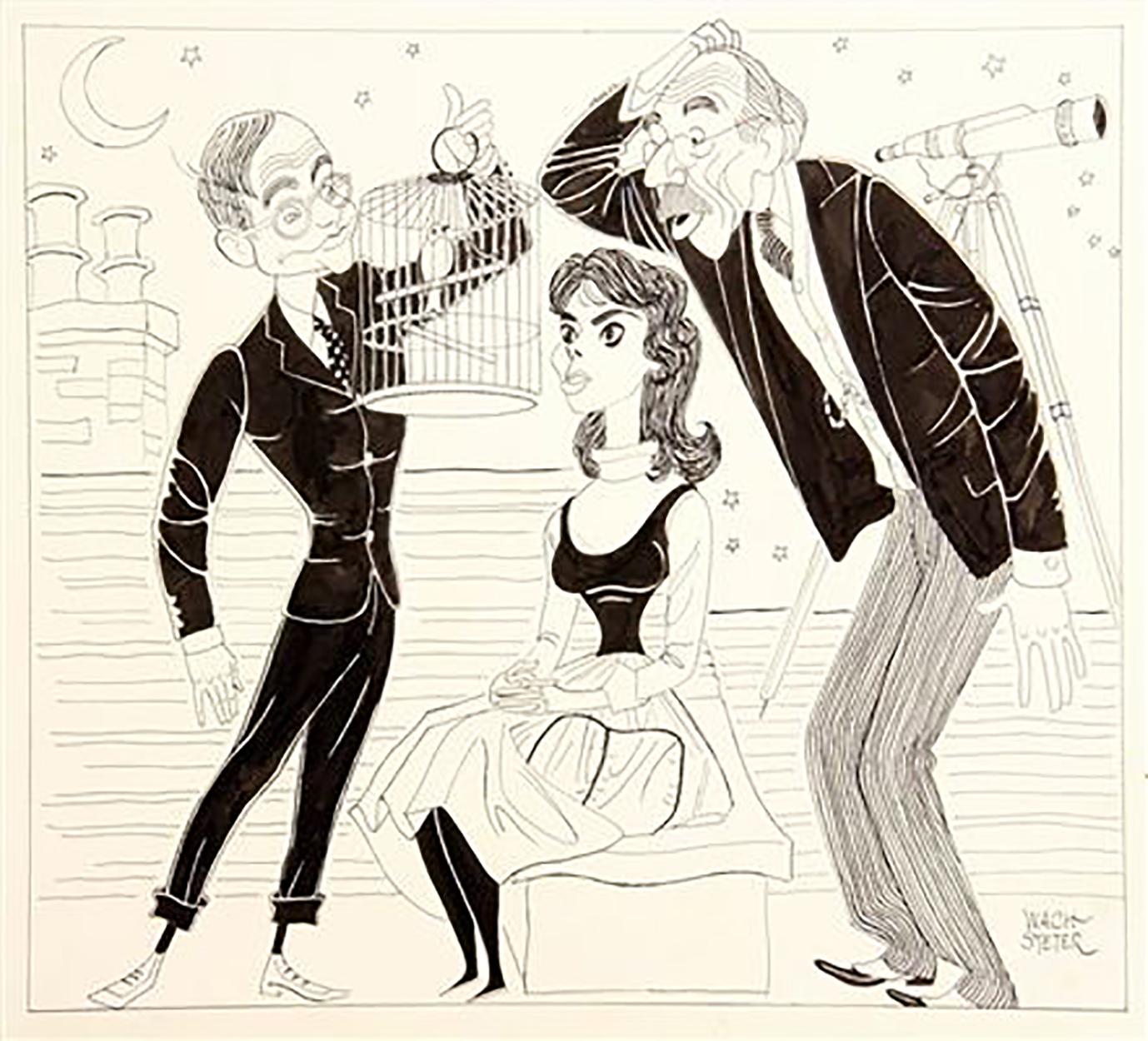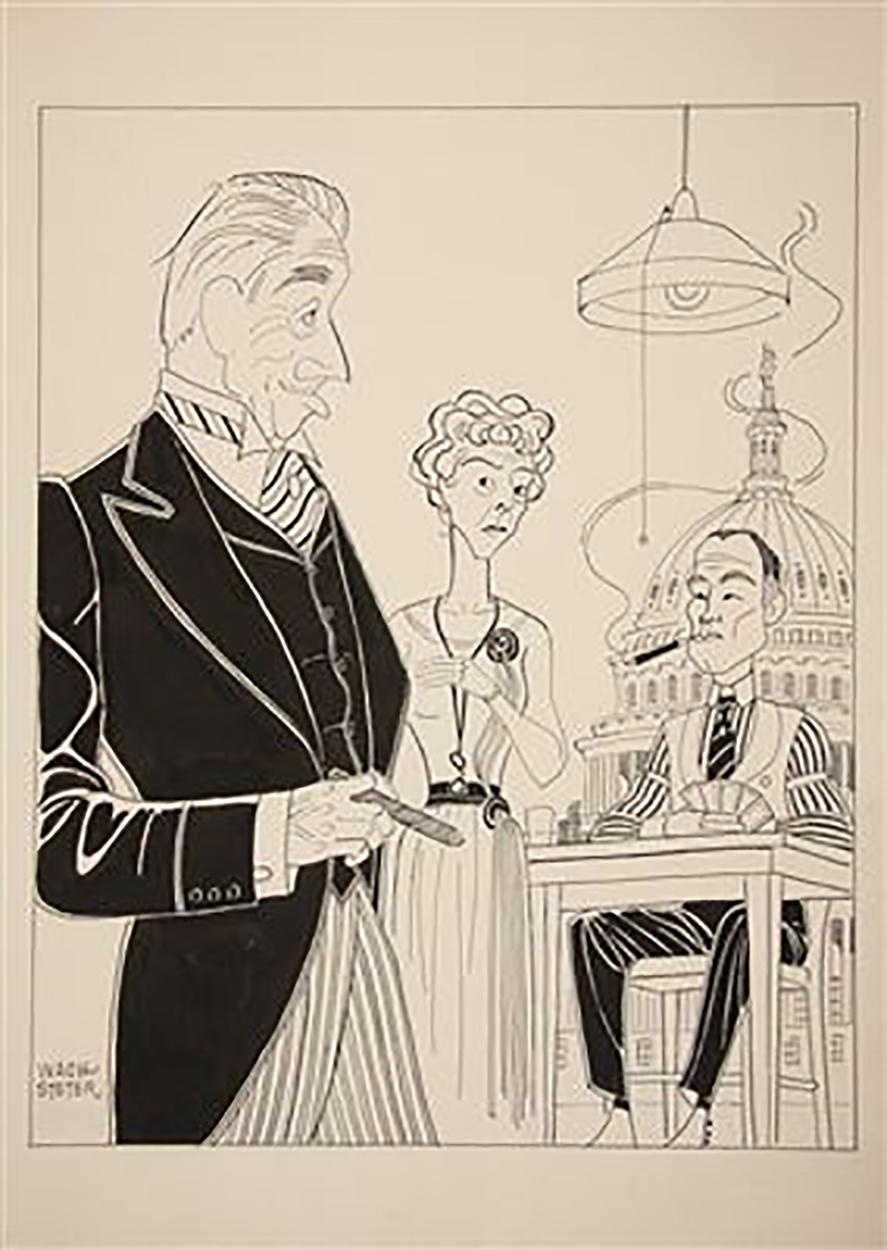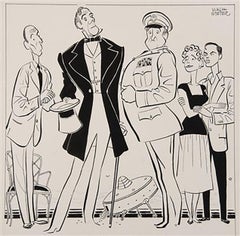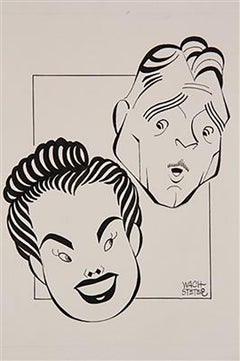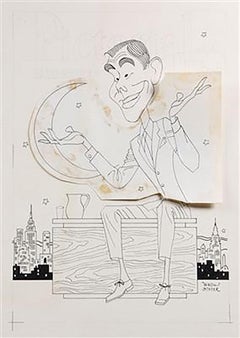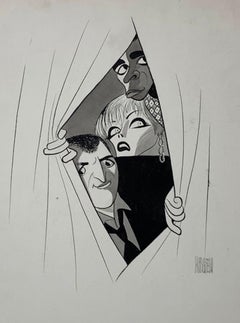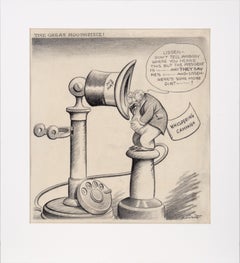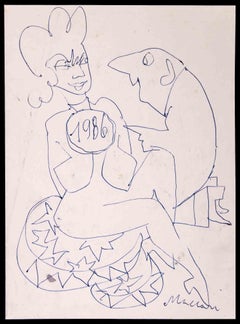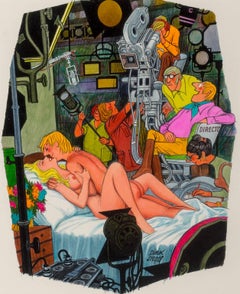Items Similar to "My Favorite Martian, " CBS-TV Sitcom, 1963
Want more images or videos?
Request additional images or videos from the seller
1 of 5
George Wachsteter"My Favorite Martian, " CBS-TV Sitcom, 19631963
1963
$1,750
£1,329.17
€1,528.79
CA$2,445.09
A$2,726.56
CHF 1,422.60
MX$33,455.86
NOK 18,107.44
SEK 17,156.40
DKK 11,409.90
Shipping
Retrieving quote...The 1stDibs Promise:
Authenticity Guarantee,
Money-Back Guarantee,
24-Hour Cancellation
About the Item
Medium: Pen and Ink on Illustration Board
Signature: Signed Lower Right
This piece is on 22.00" x 14.00" illustration board, with a 12.75" x 10.00" image.
Caricature by George Wachsteter (1911-2004) for the out-of-this-world CBS-TV sitcom `My Favorite Martian`, starring Ray Walston as Uncle Martin & Bill Bixby as Tim O`Hara. The hit show ran 9/29/63 - 5/1/66, for 107 episodes (75 b&w, 32 color). This drawing was probably done for the cover of the New York Journal-American Pictorial Magazine and TView Section at the time of or shortly after the season`s 1963 premiere.
- Creator:George Wachsteter (1911 - 2004)
- Creation Year:1963
- Dimensions:Height: 12.75 in (32.39 cm)Width: 10 in (25.4 cm)
- Medium:
- Period:
- Condition:Medium incluses applied Ben Day halftone. Some toning.
- Gallery Location:Fort Washington, PA
- Reference Number:Seller: 22071stDibs: LU38436363042
About the Seller
5.0
Recognized Seller
These prestigious sellers are industry leaders and represent the highest echelon for item quality and design.
Platinum Seller
Premium sellers with a 4.7+ rating and 24-hour response times
Established in 1995
1stDibs seller since 2016
128 sales on 1stDibs
Typical response time: 5 hours
- ShippingRetrieving quote...Shipping from: Fort Washington, PA
- Return Policy
Authenticity Guarantee
In the unlikely event there’s an issue with an item’s authenticity, contact us within 1 year for a full refund. DetailsMoney-Back Guarantee
If your item is not as described, is damaged in transit, or does not arrive, contact us within 7 days for a full refund. Details24-Hour Cancellation
You have a 24-hour grace period in which to reconsider your purchase, with no questions asked.Vetted Professional Sellers
Our world-class sellers must adhere to strict standards for service and quality, maintaining the integrity of our listings.Price-Match Guarantee
If you find that a seller listed the same item for a lower price elsewhere, we’ll match it.Trusted Global Delivery
Our best-in-class carrier network provides specialized shipping options worldwide, including custom delivery.More From This Seller
View AllCaricature to Promote Sitcom Debut, "The Tom Ewell Show, " 1960
By George Wachsteter
Located in Fort Washington, PA
Medium: Ink with Color Overlay on Board
Signature: Signed Lower Right
Ink on Illustration Board drawing with color overlay, this illustration features Tom Ewell as Tom Potter and Ma...
Category
1960s Figurative Drawings and Watercolors
Materials
Ink, Board
Gore Vidal's 1957 Comedy, "A Visit to a Small Planet"
By George Wachsteter
Located in Fort Washington, PA
Medium: Pen and Ink on Illustration Board
Signature: Signed Upper Right
This piece is on 15.00" x 20.00" illustration board, with an image that measures to 13.50" x 13.50."
Caricature by George Wachsteter (1911-2004) for Gore Vidal`s 1957 comedy `A Visit to a Small Planet` starring Cyril Ritchard as Kreton, at the Booth Theatre. Featuring (l to r) Martyn Green, Eddie Mayehoff, Sibyl Bowan & Philip Coolidge. This witty, incisive play was directed by Ritchard, produced by George Axelrod and Clinton Wilder, and designed by Oliver Smith...
Category
1950s Figurative Drawings and Watercolors
Materials
Ink, Illustration Board, Pen
1952 CBS-TV Comedy "My Little Margie"
By George Wachsteter
Located in Fort Washington, PA
Medium: Pen and Ink on Illustration Board
Signature: Signed Lower Right
Caricature by George Wachsteter (1911-2004) for 1952 CBS-TV Comedy `My Little Margie`, starring Gale Storm an...
Category
1950s Figurative Drawings and Watercolors
Materials
Ink, Illustration Board, Pen
Johnny Carson for His Debut Appearance on "The Tonight Show"
By George Wachsteter
Located in Fort Washington, PA
Medium: Pen and Ink on Illustration Board
Signature: Signed Center Right
Caricature by George Wachsteter (1911-2004) of Johhny Carson on `The Tonight Show...
Category
1960s Figurative Drawings and Watercolors
Materials
Ink, Illustration Board, Pen
1959 Broadway Production of "The Moonbird"
By George Wachsteter
Located in Fort Washington, PA
Medium: Pen and Ink on Cardstock
Signature: Signed Lower Right
This illustration is on 15.00" x 22.00" cardstock with a 12.75" x 14.25" image. Minor edge soiling.
The Illustration was commissioned for the New York Herald Tribune, includes clipping. Caricature by George Wachsteter (1911-2004) for 1959 Broadway production of `The Moonbird`, starring Wally Cox, Phyllis Newman & Michael Hordern. An English adaptation of Marcel Ayme`s popular 1955 French stage comedy, the show was a notorious flop, produced by Harry Belafonte...
Category
1950s Figurative Drawings and Watercolors
Materials
Paper, Ink, Pen
Caricature Promo for 1959 Broadway Play, "The Gang's All Here"
By George Wachsteter
Located in Fort Washington, PA
Medium: Pen and Ink on Cardstock
Signature: Signed Lower Left
13.25" x 10.50" image on 22.00" x 15.00" cardstock.
Ink on Cardstock Caricature Promo for 1959 Broadway Play `The Gang`s All Here`, starring Melvyn Douglas...
Category
1950s Figurative Drawings and Watercolors
Materials
Paper, Ink, Pen
You May Also Like
Mission Impossible Original TV Guide Drawing Illustration Caricature Mid Century
By Albert Al Hirschfeld
Located in New York, NY
"Mission Impossible" Original TV Guide Drawing Illustration Caricature Mid Century NYC with Greg Morris, Barbara Bain, and Steve Hill. This original drawing...
Category
1960s American Modern Figurative Drawings and Watercolors
Materials
Ink, Board
"The Great Mouthpiece" - Vintage Political Cartoon
Located in Soquel, CA
Vintage political cartoon by H.M. Talburt (American, 1895-1966). A man in a suit is speaking about the president into his "hat," which is the mouthpi...
Category
1930s Other Art Style Figurative Drawings and Watercolors
Materials
Paper, Pencil
Greeting - Drawing by Mino Maccari - 1960s
By Mino Maccari
Located in Roma, IT
Greeting is a China Ink Drawing realized by Mino Maccari (1924-1989) in 1986.
Hand-signed on the lower margin.
Good condition on a little white paper.
Mino Maccari (Siena, 1924-Ro...
Category
1960s Modern Figurative Drawings and Watercolors
Materials
Ink
That's a Wrap, Playboy cartoon Illustration ,
By Dink Siegel
Located in Miami, FL
Dink Siegel (American, 1910-2003)
That's a Wrap, Playboy cartoon, August 1973
Mixed media on board
11.25 x 8.5 in.
Signed lower right
Category
1970s American Modern Figurative Drawings and Watercolors
Materials
Mixed Media
Mary Tyler Moore Dick Van Dyke Mid 20th Century Hollywood Emmy Award TV Legends
By Albert Al Hirschfeld
Located in New York, NY
Mary Tyler Moore Dick Van Dyke Mid 20th Century Hollywood Emmy Award TV Legends
Al Hirschfeld (1903 – 2003)
Mary Tyler Moore and Dick Van Dyke
Sight Size: 15 1/4 x 11 1/2 inches
Etc...
Category
1970s Performance Figurative Prints
Materials
Lithograph
Art Lovers and Art Critics Analyzing Obscene Painting. Cartoon
By Richard Taylor
Located in Miami, FL
Cartoonist Richard Taylor was trained in academic art. He frequently comments on abstract art which was the new and radical thing at the time. "Curtis sees so much more in these thi...
Category
1940s Academic Portrait Drawings and Watercolors
Materials
Ink, Board
More Ways To Browse
Vintage Tvs Vintage Televisions
My Retro Tvs
Bill Martin
40 X 40 Painting
French Academy Paintings
40x40 Painting
Street New York Painting
Village Painting
Abstract Still Life Painting
Art Institute Of Chicago
Still Life Of Flowers
Inspirational Sculptures
Gilt Framed Art
Western Art Paintings
Paintings Switzerland
Black White Photography Framed Signed
Soft Landscape Painting
Tranquility Paintings

